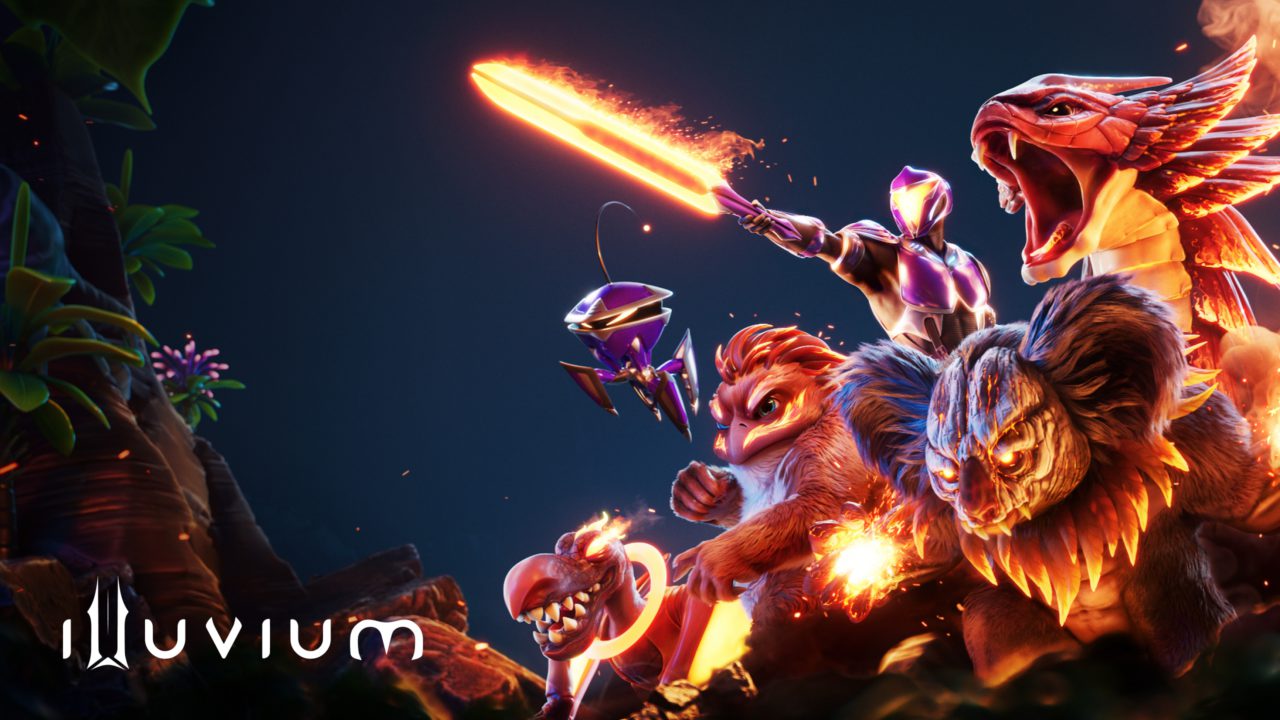Note that the following information is intended for informational purposes only and does not constitute financial advice.
Illuvium and ILV Token Overview
This article provides an overview of Illuvium and its native token, ILV, summarizing key information from its whitepaper and highlighting potential benefits and risks to its tokenomics strategy.
What is Illuvium?
Illuvium is a blockchain-based gaming platform that blends open-world exploration with auto-battler mechanics. Built on Ethereum and utilizing Immutable X for gas-free transactions, Illuvium features NFT-based creatures called Illuvials, which players can collect, upgrade, and battle.
Illuvium: Key Features
- Open-world Exploration: Players explore a sci-fi fantasy world across diverse biomes to capture NFT creatures called Illuvials.
- Interconnected Games: Illuvium features a suite of games (like Illuvium: Arena, Zero, and Overworld) that share assets and economy.
- Ethereum & Immutable X: Uses Immutable X for gas-free transactions, while still leveraging Ethereum’s security.
- Land Ownership: Players can buy land in Illuvium: Zero to build industrial complexes that fuel the economy.
ILV Token
The platform’s native token, ILV, serves multiple purposes:
ILV Token Utilities
- Governance: Holders can vote on protocol decisions via the Illuvium DAO.
- Staking & Rewards: ILV stakers earn rewards from in-game revenue and liquidity mining.
- Game Utility: Players can use ILV for purchasing NFTs, transactions, and other in-game mechanics.
The Tokenomics Strategy
Key aspects of Illuvium’s tokenomics include:
- Fixed Supply: ILV has a hard cap of 10 million tokens to create scarcity.
- Revenue Distribution: The game’s revenue is redistributed to ILV stakers via a buyback mechanism.
- Vesting Period: Staking rewards have a lock-up period to reduce selling pressure.
- Dual Token System: It includes sILV2, a synthetic version of ILV, which can be used in-game but isn’t tradable on exchanges.
Potential Benefits
- Designed for Long-term Stability: Its reward systems are geared more towards supporting long-term sustainability, rather than those of Axie Infinity or similar games, which are more inflationary in their design.
- Deflationary Mechanics: The limited supply and buyback strategy both help maintain long-term value.
- Play-to-Earn (P2E) Enhancements: The dual token system prevents excessive sell pressure on ILV.
- Incentive Alignment: The revenue-sharing model aligns incentives between players and investors.
- Detachment from Gameplay: Fluctuations in the price of ILV will have limited impact on the experience of players, which in turn means the game is more likely to survive extrinsic economic shocks.
- Ability to Recover: Conversely from the above, even if ILV’s value plummets, it is more likely to recover its value (so long as the game continues to be popular and profitable).
Potential Risks
- Utility Risks: As a governance token, ILV has less utility in the game itself. Thus, even if the game is popular, ILV may lose value if the game is not also profitable and investor-friendly.
- Governance Risks: Further to the above, poor utility in a governance token may cause, and/or be further reinforced by, inefficiencies in the governance process. For instance, there may be a lack of continuity in the voting base, as it becomes too easy or tempting for new holders to buy up enough tokens to displace and diminish the voting power of existing holders (who may have bought the token when it was much more valuable).
- Popularity/Profitability Risks: As Illuvium funds its staking rewards with the in-game transactions of players, the game must be popular and profitable to incentivise further staking. If stakers are not fairly rewarded, they may sell ILV, which depreciates the currency.
- High Entry Barrier: If ILV becomes too expensive, new players might be priced out.
- Liquidity Risks: Vesting periods can limit liquidity for stakers.
- Comparative Complexity: Unlike simpler Web3 games, Illuvium’s dual-token and revenue-sharing mechanics might be harder for mainstream users to grasp.
Simulating the ILV Token
We collaborated with Naavik to model the tokenomics strategies of several prospective web3 projects, including ILV.
This model simulates the high-level dynamics of the ILV token. At the top, players’ game-based transactions, such as buying fuel tokens (not shown directly), expend ETH (Ethereum), which is sent to the Illuvium Vault.
Periodically, the Illuvium Vault – which is a developer-controlled protocol – uses its ETH revenues from users to buy back ILV tokens from the Sushi ILV/ETH Liquidity Pool. These tokens are how ILV stakers are repaid.
For simplicity, the model assumes that as a whole, stakers are rewarded with ILV at the value of the sum total of the ETH that players spent, for the given time interval (i.e. a step in the model). For example, if players spent 1000 ETH on the game in total in a given interval, and the price per ILV at the end of that interval was 0.2 ETH, stakers would be rewarded with a total of (1000/0.2=) 5000 ILV in total.
We also assume that, at each interval (step), stakers sell 10% of the total ILV they hold (assuming at least this much is un-staked ILV). This applies downward pressure on the price of ILV in the liquidity pool.
With this particular set of assumptions about player spending and staker selling, we observe that the price of ILV does fall somewhat initially, from 0.3 to around 0.2. However, this decline stabilises, leading to a long-term average price of above 0.2, albeit with some volatility due to the relatively low liquidity in the liquidity pool.
The reason the price is able to stabilise is because the Illuvium Vault’s buying of ILV for ETH matches and compensates for the selling of ILV by stakers.
In the model, we have included two modifiable parameters which allow revenues from players and the amount of selling by stakers to be changed. Modify these parameters in the model and observe what happens.
Notice that modifying either of these parameters will still lead to a long-term stabilisation of ILV’s value. In the case of player revenues, this is because stakers are simply rewarded with ILV equal to the ETH revenues: the less the Vault collects, the less it pays out as staking rewards.
Where lowering revenues lowers the amount of ILV rewarded for staking, increased selling by stakers does the reverse. The more ILV that’s sold, the more the ILV price depreciates, and thus the more ILV a buyer gets per ETH spent. This means that when the Vault buys up ILV by selling ETH, it simply gets more ILV in exchange. The more ILV the Vault gets, the more stakers get. In turn, this means stakers sell more, which means the Vault buys more, etc. If our assumptions hold true as they do in this model, this negative feedback loop will work continuously to keep the price relatively constant.
The reason why neither revenues nor sell pressure cause unsustainable decline in token value in this model is because the Vault is only required to pay out what it earns: even if the game collects no revenues from players, there is no “minimum reward” that needs to be paid out to stakers. Thus, stakers are rewarded purely in proportion to whatever the game earns.
Note that this does not mean that this tokenomics strategy is impervious to price collapse: in our model, we’ve deliberately simplified the selling behaviour of stakers. In an extreme scenario, if the game made no revenue, and stakers thus got no rewards, they’d in all likelihood sell all of their unstaked tokens immediately. Meanwhile, in our model, we’ve assumed that they simply sell x% of whatever tokens they’re holding.
What our model and this caveat shows is that the stability of ILV relies on the profitability of the game and the confidence of token holders.

